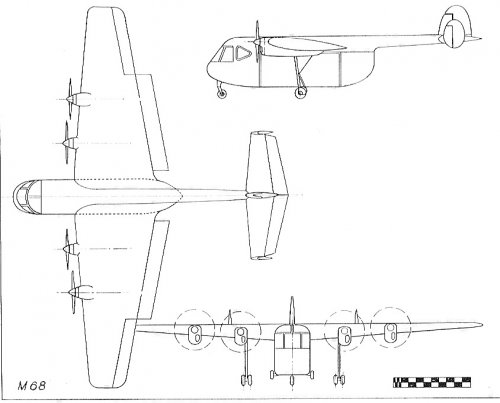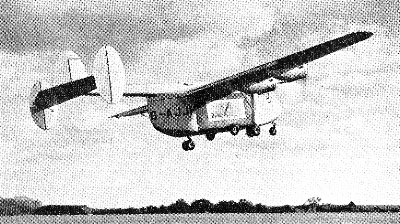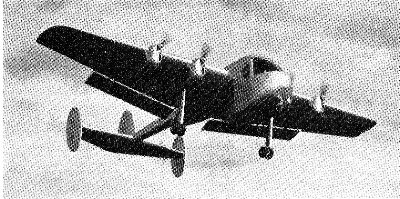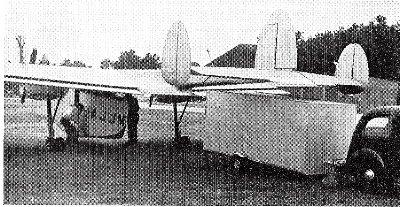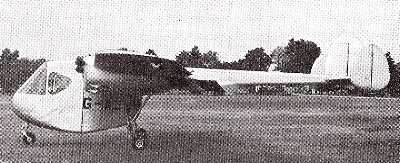On the heels of the Fairchild XC-120 Packplane http://www.secretprojects.co.uk/forum/index.php/topic,6263.0.htm, let me present it's little British cousin, the Miles M.68 Boxcar. Basically a four-engined variant of the M.57 Aerovan, the one and only M.68 Boxcar had a removable central fuselage which could be towed on it's own wheels. It would have been quite handy, I think, to have fuselages kitted out for cargo use, refrigeration, passengers, medevac, you name it, to switch out as needed.
Here are some specs and pics, all from Don L. Brown's fantastic MILES AIRCRAFT SINCE 1925.
SPECIFICATION AND DATA
M.68 and M.72.
Here are some specs and pics, all from Don L. Brown's fantastic MILES AIRCRAFT SINCE 1925.
SPECIFICATION AND DATA
M.68 and M.72.
- Four 100 hp Blackburn Cirrus Minor II.
- Span 50 ft; length 35 ft 8 in; height 11 ft 10 in (M.68), 13 ft 6 in (M.72); wing area 390 sq ft; aspect ratio 6.4; wing section, root NACA 23018, tip NACA 2412.
- Weight empty 3,618 Ib; fuel (l00 gal) 750 Ib; oil (8 gal) 72 1b; pilot 160 lb; payload 1,400 lb; all up weight 6,000 Ib (4,100 lb without container); wing loading 15.4 lb/sq ft.
- Maximum speed 137 mph; cruising speed 121 mph.
- Run to unstick 795 ft; distance to 50 ft 1,620 ft; landing run 444 ft; landing from 50 ft 975 ft.
- Rate of climb 630 ft/min; rate of climb, one engine out 250 ft/min; time to 10,000 ft 31 min.
- Range 610 miles; duration 5 1/4 hrs.

